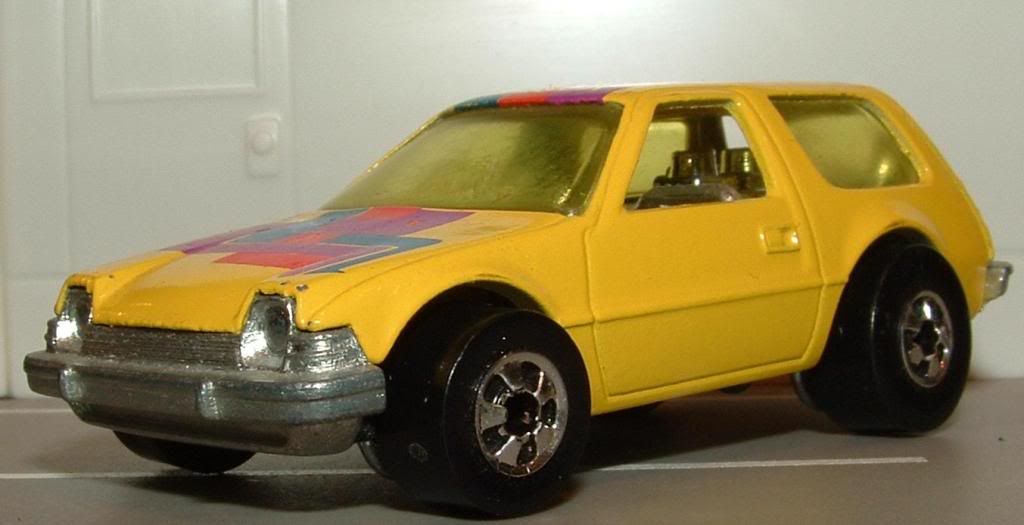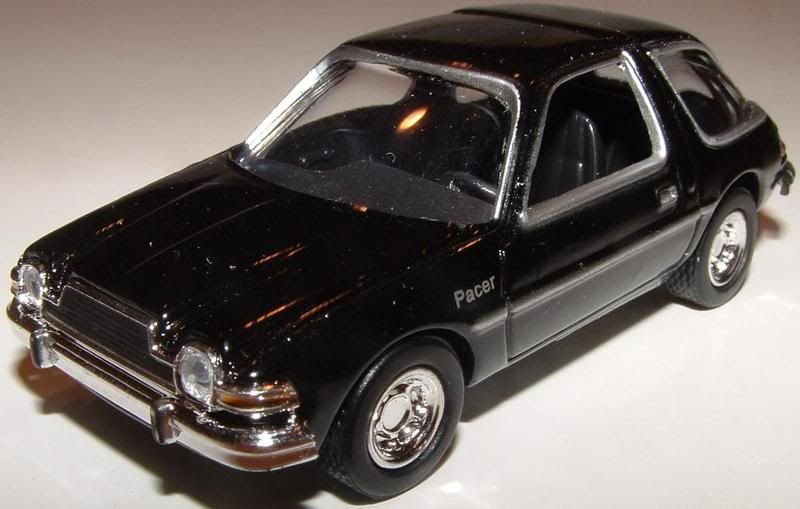American Motors always dared to be different. In order to differentiate themselves from the Big Three, they took chances and risks with their styling in order to stand out in a crowd that other brands wouldn’t even think about undertaking. Some paid off- the Gremlin was a shortened AMC Hornet and sold very well for a minimal investment. Some did not. Two in particular have been referred to as being the cars that killed AMC: one is the Matador coupe and the other is the subject of this article, the Pacer.
The Pacer was something bold and innovative- originally scheduled to be powered by a licensed version of the GM Wankel engine, AMC instead had to shoehorn the 232 & 258 cubic inch straight sixes under the hood due to GM canceling their rotary late in the development stage. Many of the Pacer’s styling quirks have a purpose- the built in rollbar, for example, was in anticipation of rollover crash testing regulations that never materialized. This made the Pacer heavier than it would have been otherwise, which unfortunately affected both gas mileage and performance. The passenger door was longer than the driver’s side door in order to make entry & exit easier for rear seat passengers. Unfortunately, this made it awkward when AMC attempted to sell a right-hand drive converted version of the car in the United Kingdom. There was no budget to make the left door longer and the right door shorter, so UK Pacers ended up with a longer driver door than passenger door. It was wider than other compacts of the era, and ads for the car featured a Nova driving inside the front of a Pacer to show just how wide the car really was. Another featured a full-size Ford LTD parking, and the Ford parts being removed to show that it was actually a Pacer underneath. The idea was to make the interior comfortable for both the driver and passengers used to full-size cars.
The Pacer could not have been timed better: an all new from the ground up small car debuting in the middle of an oil crisis. It had innovative safety features and unique aerodynamic styling that couldn’t be confused for anything else on the road (before or since). So why did this car fail so miserably?
Most people agree that this car was far too radically styled for its era. Like the Chrysler Airflow or the GM “Dustbuster” minivans, the look went too far beyond what the general public was willing to accept from an automaker at the time. Oddly, the car has aged tremendously well. Thanks to the Ford Taurus, the rounded styling did catch on in the mid-1980s (more than a full decade after the Pacer’s introduction, and six years after its discontinuation) and many cars currently have an aerodynamic design instead of the three-box format preferred in the 1970s.
The car was designed from the inside out to be as ergonomic as possible. One would think that someone at AMC would have caught on to the fact that the car’s massive amount of glass would cause the air conditioner to be a necessity instead of an option. Pacers could heat up quickly in direct sunlight, and one of the car’s many nicknames was “fishbowl” referring to the amount of glass on the car’s surface area.
The Pacer was heavy. Between the glass and the metal reinforcements to meet safety regulations that never came into play, the car was much heavier than it was designed to be. And that’s before one takes into account that it was designed for a much smaller, lighter engine. Because of that, not only did performance suffer, but so did the critical fuel economy numbers.
The Japanese car manufacturers were just establishing themselves in the US market at the time (there were also offerings from European brands that are no longer available in the US market including Renault, Fiat, and Peugeot), and many Americans had never owned a foreign car. Many thought it to be unfathomable that they’d end up driving a car that wasn’t built in the USA someday. Here’s where AMC and the rest of the American manufacturers really dropped the ball- they underestimated the quality of the Japanese cars and overestimated the brand loyalty of their existing customer base. By the time the Pacer ended production, Renault had purchased a controlling interest in AMC, and suddenly the newest AMCs were rebadged Renaults. Cars like the Renault designed Alliance, Encore, LeCar, and Medallion became the products in AMC showrooms while the Pacer, Spirit and Concord were dropped in the early 1980s. Of the cars developed by AMC only the Eagle 4WD stayed in production until the end of the line on December 14, 1987.
From the late ‘70s through the ‘80s the Pacer suffered low resale values, and was mocked mercilessly by comedians and the general public. If you were making a movie or TV show and wanted to establish a character as a loser, one of the easiest ways of doing so was to give him (or her) a Pacer. Bonus points if it was in bad shape. Then the ‘70s started being cool again and the Pacer suddenly became an icon for the decade along with disco and bellbottoms. Being Wayne & Garth’s Mirthmobile in “Wayne’s World” didn’t hurt matters and one of the movie’s most famous scenes (rocking out to Queen’s “Bohemian Rhapsody”) takes place in the car. Even children’s movies like the animated “A Goofy Movie” featured the Pacer in the ‘90s, and eventually the car built up a reputation as a ‘nerd car’, and values started climbing for nice examples of the real car around the turn of the century. Which may explain the recent increase in Pacer models offered in small scale. As an added bonus, the “Cars 2” trailer has recently shown both Gremlins and Pacers featured (unfortunately as villains- AMC still gets little respect from Hollywood) so it is extremely likely that Mattel’s line of Pixar “Cars” will release a Pacer at some point between now and the movie’s release date next summer.
1975-1977:
Corgi (coupe)
Tomica (coupe)
Hot Wheels (wagon; hot rod with oversized engine in the cargo area)
Universal (wagon; scaled up copy of the Hot Wheels without the oversized motor)
Racing Champions (coupe; hood opens the wrong way)
Racing Champions Street Wheels
Johnny Lightning (recast of the Racing Champions model; hood cast shut)
Wheeler
1978-1980:
MotorMax (coupe)



No comments:
Post a Comment